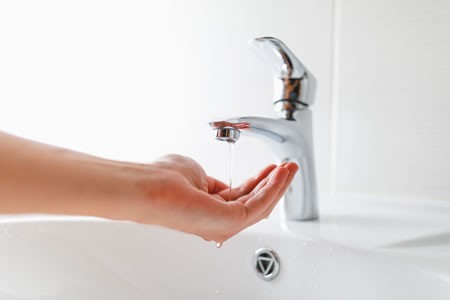Low Water Pressure: A Troubleshooter’s Guide to Low Well Water Pressure
 In the U.S., people usually either rely on the city or county for the supply of water or opt for a well to ensure an uninterrupted supply. In recent years, wells have become increasingly popular in the U.S. Well water offers many benefits over traditional water supply. However, sometimes, wells encounter supply issues, which lead to compromised water pressure. If you have lately been experiencing the problem of low water pressure, it could be due to pump or tank-related issues. This article aims to discuss the common causes of low water pressure and what homeowners can do to solve this problem.
In the U.S., people usually either rely on the city or county for the supply of water or opt for a well to ensure an uninterrupted supply. In recent years, wells have become increasingly popular in the U.S. Well water offers many benefits over traditional water supply. However, sometimes, wells encounter supply issues, which lead to compromised water pressure. If you have lately been experiencing the problem of low water pressure, it could be due to pump or tank-related issues. This article aims to discuss the common causes of low water pressure and what homeowners can do to solve this problem.
Common Causes of Low Well Water Pressure Problems
1. A Broken Pump
One of the most common causes of low well water pressure is a broken pump. A properly working well pump does not take more than three to five minutes to fill up the pressure tank. If your pump is taking longer than five minutes to fill up the pressure tank, chances are you are dealing with a broken pump. Similarly, if your electricity bill has suddenly increased or if you are continually hearing loud thuds, it’s time to get your pump checked. Call a professional and ask their opinion.
Several factors affect the life of your pump. For instance, any pump dealing with a waterlogged pressure tank breaks faster as the pump has to cycle on and off repeatedly. Similarly, water quality also has a direct effect on the life of the pump.
2. A Water-Logged Pressure Tank
In a well water system, the pressure tank performs the critical job of storing water and transferring it to the connected plumbing fixtures, as and when needed. The pressure tank maintains a specific water/air ratio inside the tank, which allows it to supply water at a particular pressure. Unfortunately, the water tank can sometimes become waterlogged. When this happens, the water/air ratio gets disrupted, and the tank overfills with water. The pressure tank is, therefore, unable to supply water at the required pressure. This problem is most commonly found in galvanized pressure tanks.
In case a pressure tank has become severely waterlogged, it becomes tough to repressurize it. In such a scenario, you may be required to replace the pressure tank. In any case, it is best to seek the help of an expert.
3. A Leaking System
Another cause of low well water pressure is a leaking system. Any leaks in the area between well pump piping and plumbing fixtures can lead to low well water pressure. In most cases, leaks are caused by either the rust formed inside a pressure tank or damaged pipes. Leaky systems are a tricky business, and you will have to hire an expert to accurately spot the issue.
The Final Word
Low well water pressure is a common problem faced by many homeowners. Unfortunately, it’s not a problem most homeowners can fix on their own. If the problem of low well water pressure has persisted for some time now, it’s best to call an expert.
Give Ries Well Drilling Inc a call to answer any questions you may have about low water pressure in your water well system. We can be reached at (586) 784-9516!
We provide Water Well Drilling Services in the following Michigan Counties:
 In the U.S., people usually either rely on the city or county for the supply of water or opt for a well to ensure an uninterrupted supply. In recent years, wells have become increasingly popular in the U.S. Well water offers many benefits over traditional water supply. However, sometimes, wells encounter supply issues, which lead to compromised water pressure. If you have lately been experiencing the problem of low water pressure, it could be due to pump or tank-related issues. This article aims to discuss the common causes of low water pressure and what homeowners can do to solve this problem.
In the U.S., people usually either rely on the city or county for the supply of water or opt for a well to ensure an uninterrupted supply. In recent years, wells have become increasingly popular in the U.S. Well water offers many benefits over traditional water supply. However, sometimes, wells encounter supply issues, which lead to compromised water pressure. If you have lately been experiencing the problem of low water pressure, it could be due to pump or tank-related issues. This article aims to discuss the common causes of low water pressure and what homeowners can do to solve this problem.